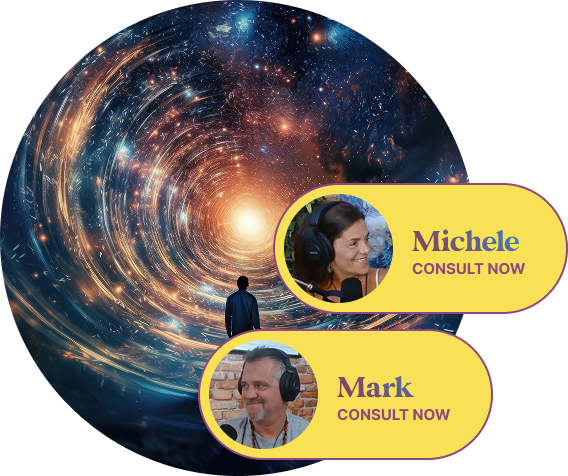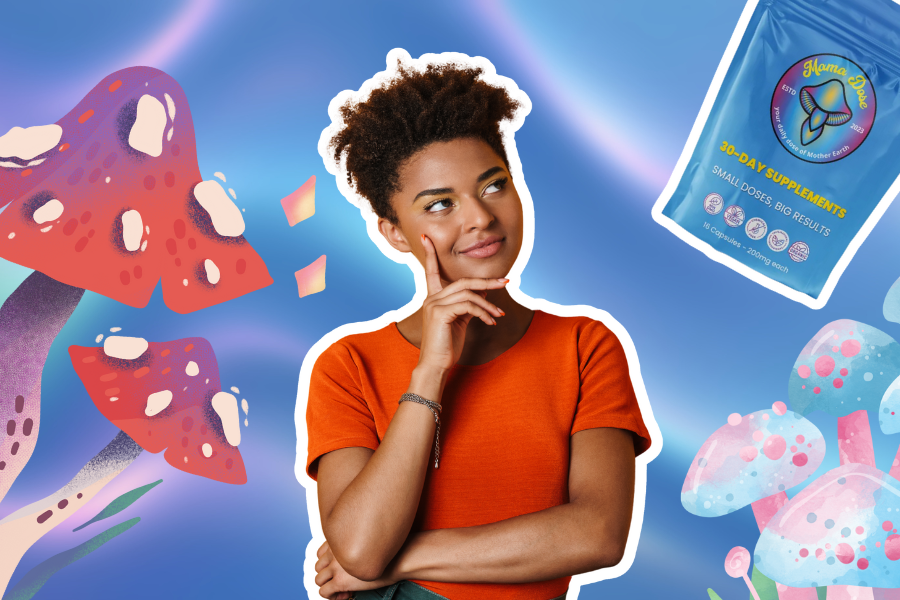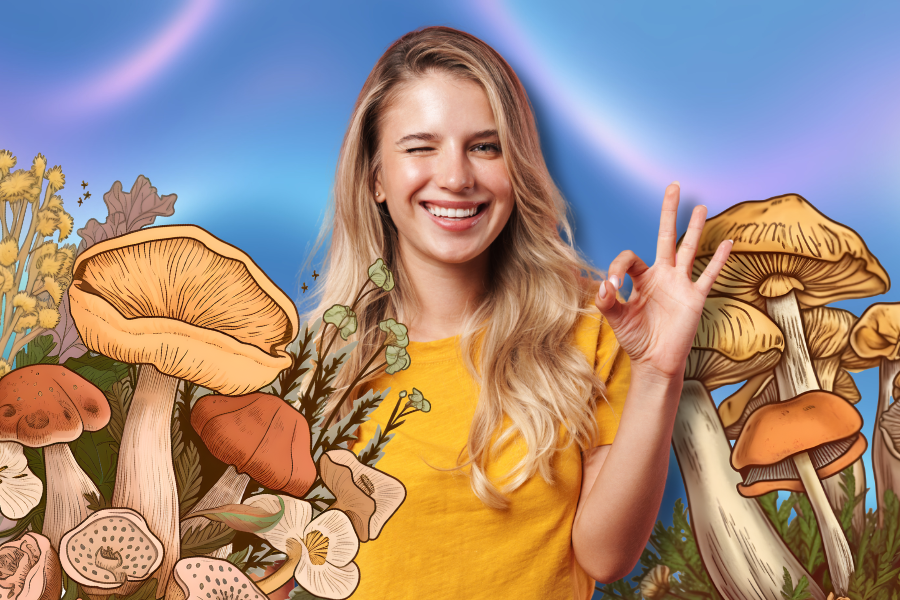

Table of Contents
Toggle
Somewhere between a cup of coffee and a cosmic revelation lies the microdose. It’s subtle, so subtle that many people second-guess whether anything’s even happening. No wild visuals, no ego death, no melting walls. Just a barely perceptible hum, a quiet tuning of the inner frequency. But underneath that quiet hum, something very real is taking place inside the body.
Psychedelics like psilocybin don’t just play with the mind; they interact with a complex biochemical structure that touches almost every part of the nervous system. To understand what’s actually going on, it helps to zoom in, to the level of neurons, serotonin receptors, and even gene expression, and then zoom back out to the lived experience that so many describe as “life just feels a little lighter.”
At the heart of microdosing is serotonin, the neurotransmitter often dubbed the “feel-good” chemical, but that nickname barely scratches the surface. Serotonin is more like a conductor of mood, appetite, sleep, and sensory perception. Psilocybin mimics serotonin by binding primarily to the 5-HT2A receptor, a kind of master switch that influences neural communication and cognitive flexibility. When someone takes a full dose, these receptors light up in a flood of activity that rewires the brain’s usual communication patterns. A microdose, though, gently taps that same switch without flipping it all the way on.
This subtle activation increases entropy. Which is just a fancy way of saying the brain becomes a little more flexible, less rigid in its patterns. And what are the results? A softening of mental loops and a feeling of expanded awareness, often reported as greater creativity, presence, or emotional balance.
Once the molecule locks into that serotonin receptor, much more happens in the neural network. Electrical signals shift, neurotransmitter levels modulate, and the brain’s Default Mode Network, or shortly DMN, starts to quiet down. This network is what keeps the internal narrator running in a loop. Under a full dose, the narrator can dissolve entirely, giving rise to mystical experiences or ego death. Under a microdose, the voice doesn’t disappear; it just takes a breath.
This pause creates a subtle distance between thought and reaction, which many describe as increased emotional regulation or a newfound patience. The nervous system, which constantly oscillates between fight-or-flight and rest-and-digest, leans slightly more toward the latter. Cortisol levels can drop, heart rate steadies, and a sense of calm alertness emerges. The shift isn’t dramatic, but that’s the point. It’s not about blasting open the doors of perception. It’s about gently lubricating the hinges.

While the focus often stays on the brain, psychedelics have far-reaching effects throughout the body. Around 90% of serotonin receptors aren’t even in the brain; they’re in the gut. That’s why many people feel microdoses not as a “mental” effect but as a bodily one: a lightness in the chest, a relaxed jaw, a subtle warmth spreading through the limbs.
There’s also growing research suggesting that psychedelics may promote neuroplasticity, the brain’s ability to form new connections. Studies on psilocybin have shown increases in dendritic growth and synaptic density, meaning neurons literally sprout new branches. Even at microdoses, these small shifts may prime the system for adaptability, helping the body and mind respond to stress more effectively. Some scientists believe this could explain the long-term benefits people report, which are related to less anxiety, more motivation and deeper connection.
While serotonin shapes mood and emotional balance, dopamine drives focus, motivation, and a sense of purpose. Microdosing appears to subtly boost these dopaminergic pathways, enhancing clarity and engagement without overstimulation. Psychedelics can influence dopamine systems connected to learning and reward, creating a balanced state that’s both calm and alert. Many describe it as a clear, energized mindset where work flows more easily, music feels richer, and conversations unfold more naturally.
It’s not the substance taking control, it’s the brain operating more efficiently, with sharper focus and smoother communication between its networks.
A less-discussed piece of the puzzle lies in the immune and endocrine systems. Psychedelics appear to influence inflammation and hormonal balance through their interaction with the serotonin network.
Early studies have shown reductions in inflammatory markers and improvements in mood regulation linked to psilocybin’s modulation of cytokines, the chemical messengers of the immune system. In simpler terms, microdosing may calm the body’s internal stress response. This could explain why many people report feeling less reactive, and not just emotionally, but physically. Muscles unclench. Breathing deepens. The constant background buzz of tension begins to quiet.
Yes, but not often. The body always responds, and not every microdosing experience feels smooth. Some people notice mild restlessness, stomach discomfort, or heightened emotions. These reactions often reflect one’s mindset and environment. When the body is tense or the surroundings are stressful, even a small dose can feel stimulating instead of grounding. That’s why experienced users emphasize starting with intention and focus on set and setting even when microdosing.
Keep in mind that microdosing isn’t about pushing limits; it’s about balance.
To dig deeper, read our Full Guide on Microdosing Psilocybin.
Microdosing works quietly, shaping both mind and body in subtle ways. At the heart of it, psilocybin interacts with serotonin receptors, gently increasing neural flexibility. This softens repetitive thought patterns, creating room for creativity, presence, and emotional balance without overwhelming the system. Beyond the brain, the body feels it too. That’s why microdoses often register as a lightness in the chest, relaxed muscles, or a calm, alert state rather than a purely “mental” effect.
In short, a microdose doesn’t hijack the body; it fine-tunes it. Neural circuits communicate more efficiently, the nervous system leans toward calm alertness, and the body operates with less friction, quietly primed for flexibility, clarity, and balance.
Invite your friends and earn a discount on your next purchase. Your friend also earns a discount! Get started now, by sharing your referral link with your friends.
This item is currently out of stock!
By adding it to your cart, you confirm a backorder purchase, and we will ship it as soon as it becomes available.